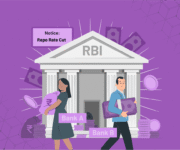The lending industry has been a crucial player in financial transactions in recent years. From mortgages to personal loans and credit cards, individuals rely on lenders for their financial needs.
However, amidst this reliance, a pressing issue is on the rise – identity theft, a risk that demands immediate attention.
Identity theft has become a formidable threat, especially in the lending industry. Technological advancements have opened up new avenues for cybercriminals to exploit personal information, creating a dangerous situation for both financial institutions and customers.
Over 27 million Indian adults suffered identity theft in 2020, highlighting the urgent need for stronger cybersecurity. Increased use of digital banking and e-commerce exposes vulnerabilities that criminals are exploiting.
In this blog post, we delve into the intricacies of identity theft within the lending industry, exploring its implications, causes, and preventative measures.
What is Identity Theft in the Lending Industry?
Identity theft is the unauthorised acquisition and unlawful use of personal data, including your name and bank account information. The ramifications of financial fraud coupled with identity theft can be disastrous.
Identity theft can take many forms in the lending context:
- Fraudulent applications for loans: Criminals use stolen or fabricated personal information to apply for loans under a victim’s name, often with no intention of repayment.
- Account takeovers: Fraudsters gain unauthorised access to a victim’s existing bank or lending accounts.
- Identity Fabrication: Criminals entirely fabricate a borrower’s information, creating a whole new identity to obtain loans. This is closely related to synthetic identities.
- Loan Stacking: Criminals open multiple small loans across numerous lenders without the intention of repaying any of them.
- Pretexting/Phishing: Fraudsters trick victims into divulging personal details (AADHAAR numbers, bank information) through false pretences.
- Child Identity Theft: Minors are particularly vulnerable, as they have a clean credit history, and their identity theft often goes unnoticed for years.
Such schemes not only inflict financial losses on lenders but also damage the credibility and reputation of victims.
Victims are often left with the agony of having to cope with debt that they never acquired.
Causes of Identity Theft in the Lending Industry
There are many factors that lead to the incidence of identity theft in the banking sector. For example:
1. Weak Cybersecurity Measures
One of the major root causes of identity theft in the lending industry is inadequate cybersecurity measures. Lending institutions usually hold huge amounts of sensitive customer data, which includes social security numbers, financial records, and personal identification information.
However, inadequate cybersecurity protocols endanger such data for cybercriminals’ exploitation. Weak encryption, outdated software, and lax access controls allow hackers to gain entry into systems and steal valuable data, leading to fraudulent activities such as account takeover and synthetic identity theft.
2. Inefficient Identity Verification Procedures
Identity theft in the financial lending sector highlights the need to enhance identity verification procedures. While traditional lenders rely on physical documents and in-person interactions, digital lending platforms can benefit from implementing more robust digital identity verification solutions.
Fraudsters may attempt to exploit less robust identity verification systems used in online lending. Lenders can counter this by implementing stronger digital identity verification solutions.
These solutions help lenders accurately distinguish between legitimate borrowers and potential criminals, mitigating risk and financial losses.
3. Vulnerabilities Introduced by Digital Lending Platforms
The rapid pace of technological innovation and digital lending platforms often outpaces regulatory oversight, leaving loopholes for exploitation.
To counter this, digital lenders must implement robust security measures like biometric authentication and real-time fraud detection.
The Impact of Identity Theft in the Lending Industry
For lenders, the repercussions of identity theft extend far beyond monetary losses, including:
1. Financial Losses and Write-Offs
Identity theft poses a severe financial risk to lenders. Fraudulent loan applications usually lead to financial losses and write-offs. When stolen identities are successfully used to acquire loans, lenders suffer unpaid debts and uncollectible assets.
Apart from the economic losses these incidents bring, the stability and profitability of lending institutions are seriously affected.
2. Reputation and Trust Damage
Identity theft also costs lending institutions losses in money, but more importantly, it damages the reputation of the financial institutions and erodes the public’s trust in them.
If borrowers are victims of identity theft, they are likely to sue the lenders for not adequately protecting their identities. Negative media attention in cases of identity theft will damage the institutional brand and its growth prospects.
3. Regulatory Burden and Compliance Efforts
Regulators demand lenders meet severe standards for safeguarding customers’ data and shielding them from fraudulent activities. When they fail to comply, they face heavy fines, penalties, and legal issues.
To mitigate non-compliance risks, lending institutions must invest in robust cybersecurity infrastructures and implement comprehensive identity verification mechanisms.
4. Legal Ramifications and Fines
Failure to sufficiently protect customer data exposes lending institutions to legal liabilities and financial penalties. Regulators can levy fines and penalties against lenders guilty of negligence or non-compliance with data protection regulations.
Lenders can also face lawsuits from identity theft victims due to fraudulent activity or inadequate compensation after a breach. These legal battles add financial burden for the institutions.
How Lenders Can Avoid Identity Theft?
Lenders can avoid identity theft in the following ways:
1. Strengthen Identity Verification Procedures
To begin with, lenders must mitigate identity theft risk with robust verification methods like multi-factor, biometric, and knowledge-based authentication.
2. Enhance Cybersecurity Measures
Invest in cybersecurity to safeguard customer data and prevent identity theft. Employ encryption, firewalls, and employee training to fend off cyber threats effectively.
3. Monitor for Suspicious Activity
Lenders should utilise real-time fraud detection to spot and stop suspicious transactions early. Automated algorithms analyse patterns and flags to minimise the impact of identity theft.
4. Secure Data Handling
The focus should be on encrypting data at rest and in transit, controlling access, and using secure authentication to protect sensitive information from unauthorised access and disclosure.
5. Educate Customers
Empower customers with security awareness to prevent identity theft. Provide resources and guidelines on recognising scams, phishing, and monitoring financial accounts.
6. Collaborate for Security
Partner with industry peers and regulators to strengthen cybersecurity defences. Share insights and best practices, and stay updated on regulatory requirements for proactive risk management.
The Bottom Line
Identity theft poses a massive threat to the lending industry, threatening financial institutions and consumers. Unless adequately addressed, weak cybersecurity measures and other vulnerabilities may contribute to this threat’s rapid escalation.
Therefore, the lending industry should adopt on stringent identity verification and increased cybersecurity measures. By focusing on proactive security strategies, lenders can prevent identity theft from undermining trust within the financial environment.
Leverage the capabilities of fintech tools like Finezza’s lending solution suite, which improves risk assessment, expedites procedures, and strengthens defences against new fraud risks.
With world-class security, flexibility, and agility, Finezza’s comprehensive loan management system can tackle the threats of identity theft and other risks.
Act now to safeguard your lending operations and clients today!




Leave a Reply